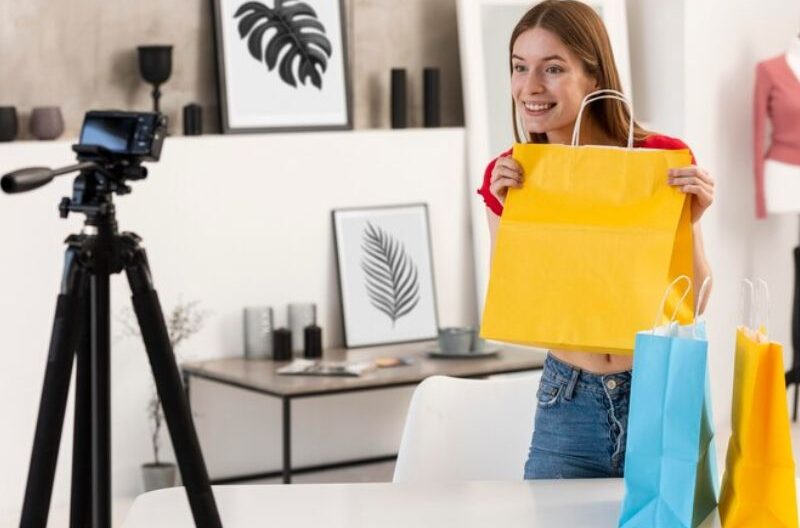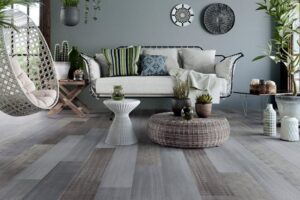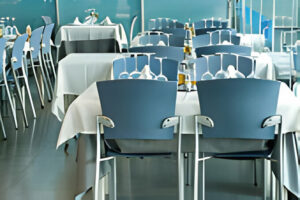
The first thing potential buyers see about your product is its visuals. Images of a high calibre attract attention and foster confidence. They provide buyers with an in-depth, lucid understanding of what you’re selling, enabling them to make wise choices. The distinction between a browser and a buyer may come down to this visual link.
Professional product photography has the ability to elevate a common product into a sought-after one, generating curiosity from customers and sales. Let’s discuss how to make your things stand out in the realm of ecommerce product photography, even on a small budget with the help of cost-effective E-commerce photography tricks.
Leveraging Natural Lighting for Professional-Quality Photos
Using natural light is one of the easiest but most powerful photography tricks. It may give your pictures a warm, natural quality that’s difficult to achieve with artificial lighting, yet it’s free and plentiful. Finding the ideal balance and angle is crucial. Your items will benefit from indirect sunlight if you place them next to a window. With this arrangement, you may produce breathtaking photos free of the harsh glares and shadows that come with direct sunshine. Note that the most flattering light is available during the golden hours, which are early morning or late afternoon.
Creating an Effective Home Studio on a Budget
Choosing the Right Space
First, choose a space with lots of natural light, such as close to a window. Make sure there’s enough room for you to walk about and explore different angles, and that there are no obstacles in the way.
Do It Yourself Backdrops
A basic and uncluttered background is essential for shots that seem professional. White poster boards, sheets, or even a roll of craft paper might be used to make one. These choices offer a background that is neutral and draws attention to your goods.
Reasonably Priced Lighting Fixtures
Even while natural light is best, you may occasionally want additional lighting. Use floor or desk lamps in place of pricey studio lights. White paper can be used to soften its light, simulating the effects of a softbox.
Tripods and Camera Stands
A stable picture is essential for sharpness. If you don’t have a tripod, use a stack of books or a shelf instead. Maintaining camera steadiness is the goal, especially when there is low light and longer exposure periods are needed.
Bouncers and Reflectors
Reflectors lessen shadows and help balance the light. You may create your own by using aluminium foil to cover a piece of cardboard. This easy-to-use tool may greatly raise the calibre of your lighting.
Mastering the Art of Smartphone Photography for E-commerce
Understanding Your Smartphone Camera Settings
There’s more to your smartphone than just point-and-click functionality. It has several options that can change the appearance of your product photographs. Investigate the manual mode first. This gives you control over the appearance of your product by enabling you to change the focus, exposure, and white balance. Try adjusting these parameters until the features of your product are just right.
Composition and Framing
In ecommerce product photography, composition is everything. To generate a balanced image, apply the rule of thirds. This is aligning your product along these lines or their intersections by cutting your frame into nine equal parts. This strategy directs attention to your product, which is the primary subject.
Lighting and Environment
Natural light tends to look the best, giving an airy, diffused appearance. Put your merchandise in front of a window so it may receive lots of natural light. Take note of shadows and make an effort to manipulate them so that your images have more depth and substance.
Editing and Post-Production Tips for Enhanced Visual Appeal
Basic Editing Techniques
Start by adjusting the brightness, contrast, and saturation to a basic level. These might enhance the visual attractiveness and pop of your goods. A lot of smartphones have rather sophisticated editing capabilities built right in. User-friendly apps with more sophisticated choices are Adobe Lightroom and Snapseed.
Retouching to Ensure Excellence
It is possible for your goods to sometimes have little flaws or uneven illumination. Retouching is useful in this situation. To fix any flaws and make sure the lighting is consistent across the product, use editing programs.
Consistency is Key
Keep your product photographs all the same in terms of appearance. Similar backdrops, lighting, and editing techniques are examples of this. Maintaining consistency gives your online shop a polished appearance and aids in gaining the trust of your clients.
Making Web Optimisations
Last but not least, make sure your photos are web-friendly. To do this, one must balance file size and quality. Large photos might cause your website to load more slowly, so reduce their size without sacrificing clarity.
Optimizing Images for E-commerce Platforms
The way your product photos load on the screen may make or break the user experience when it comes to e-commerce. Maintaining beautiful graphics while making sure your website runs quickly is a fine balance. Let’s see how you can accomplish this equilibrium.
First off, picture resizing is quite important. Large, high-resolution images will significantly slow down the loading speed of your page. You may resize an image without compromising its quality by using free online image resizers or applications like Adobe Photoshop. Choose a size that will allow for both adequate size for clarity and detail and enough modesty to keep your website running quickly.
Next, think about your picture format. When it comes to ecommerce product photography, JPEGs are usually the best option since they offer high quality at a lower file size than other formats like PNG. PNG is your best option, nevertheless, if you want a translucent backdrop.
Finally, remember to reduce the size of your pictures. Tools for compressing images shrink files without sacrificing quality. This stage is essential for a website that loads quickly without sacrificing its aesthetic appeal.
Utilizing Props and Contextual Settings Effectively
In professional product photography, the use of props and surrounding environments tells a story in addition to being aesthetically pleasing. They provide your clients with an idea of how the product may work into their daily routines. To convey cosiness and warmth, a cosy blanket placed on a well-made bed can be shot.
Selecting props that enhance the product without drawing too much attention to it is crucial. Using things that improve a product’s features and utility is a basic rule of thumb. Mannequins or models may help shoppers determine the fit and design of clothing goods. Smaller products, like jewellery, can have their intricacies emphasised with a simple backdrop and a discreet prop. Using this strategy increases the perceived worth of your product and makes it more relatable.
Advanced Techniques: Exploring Lightboxes and Softboxes
Let’s take professional product photography a bit further and discuss lightboxes and softboxes. When it comes to creating professional lighting, these instruments are revolutionary.
Conversely, softboxes work well with bigger goods and are utilised in conjunction with external lighting. By dispersing the light, they lessen sharp shadows and provide a smooth, natural appearance. Choose an angle for your softbox placement that best highlights the attributes of the product.
These two instruments are investments in producing distinctive, high-quality photos. They give your photographs a degree of professionalism that might make your online store stand out.
Staying Ahead: Keeping Up with Current Photography Trends in E-commerce
It’s not just helpful, but downright necessary to keep up with the latest trends in photography in the hectic world of online shopping. There is currently a trend towards ecommerce product photography that is more relevant and real. Consumers want to view things in use rather than merely isolated on a white backdrop.
The utilisation of 360-degree photography is one trend that is becoming more popular. Customers may see the goods from every perspective, giving them a thorough grasp of what they’re purchasing. This dynamic encounter may greatly increase client trust and engagement.
The use of vivid, dramatic hues is another trend. They draw attention and have the power to distinguish your goods in a congested internet market. But make sure the hues you select complement the attractiveness of the product and are consistent with your brand identity.
Finally, lifestyle photography is gaining popularity. It entails taking pictures of things in actual environments so that buyers can see how they could be used. This method enhances your product photos with emotional appeal in addition to context.
Read more:- Find The Best Video Production Company In Singapore For Quality Videos Services




